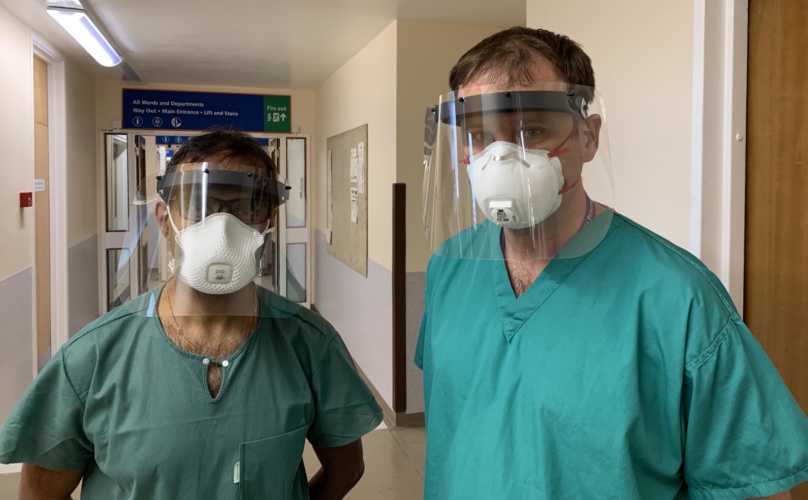Question: What is the similarity between a French aristocrat and a 3D printing professional?
Answer: They both cringe when they hear the word revolution.
 For the French establishment, the revolution was a rather unsavoury reality. In 3D Printing, it is a glorified promise that has mostly failed to become a reality, leaving many manufacturing companies and innovators sceptical about the technology.
For the French establishment, the revolution was a rather unsavoury reality. In 3D Printing, it is a glorified promise that has mostly failed to become a reality, leaving many manufacturing companies and innovators sceptical about the technology.
But are we still right to be sceptical?
Certainly, the promise of a 3D printer in every home or even in every hardware store has failed to materialise. However, the technology has been steadily finding new and innovative applications across almost every manufacturing sector. 3D Printing is now the de facto way of making form, fit and functional engineering prototypes. 3D Printing is also used extensively for shop floor applications, such as jigs, fixtures, assembly and cutting guides and to make a range of various tool cavities for processes such as blow moulding, composite lay-up and even sheet metal pressing. But the real ‘revolutionary benefit’ of 3D Printing has always been the promise of production parts, from CAD to part in one seamless digital step. For some companies, the early adopters, this has become a reality, with medical implants, aerospace engine parts and even cosmetics packaging made by the thousand. It enabled companies to rapidly bring new and innovative products to market that exploit the design freedoms of 3D Printing whilst benefiting from the zero inventory benefits of a digital supply chain. But the journey has been a long one that has been fraught with technical challenges, from process repeatability issues to a lack of part testing standards. In short, evolution not revolution.

To the casual observer, it may have looked like the adoption of 3D Printing for end-use part manufacture would continue to grow incrementally for some time—small step by small step. But then the world was turned up-side-down. A global pandemic, international trade disputes, Brexit, political and civil unrest. All the ingredients needed to disrupt the manufacturing supply chain when the global population was in the greatest need. But a need for what?
Many 3D printing companies responded to Covid by ramping up their capacity and streamlining their internal processes, driving down manufacturing costs whilst driving up responsiveness, knowledge, and capability
There was a need for ventilators, respirators, personal protective equipment, face visors, oral testing swabs, and touchless door handles. With a broken supply chain and a world in crisis, 3D Printing of end-use parts was finally a solution to a problem, rather than a solution looking for a problem. Within weeks, new guidelines and frameworks had been drafted, agreed and circulated. Thankfully, in some part to 3D Printing, supply lines were maintained.
Almost 12-months on, we have been left with an exciting legacy—a less conservative, more can-do attitude towards manufacture by 3D Printing. Many 3D printing companies responded to Covid by ramping up their capacity and streamlining their internal processes, driving down manufacturing costs whilst driving up responsiveness, knowledge, and capability. As the Covid threat thankfully recedes, these companies are now ready to support a new world of rapid, digitally-driven industrial innovation.
 So how can businesses use 3D Printing as a platform for innovation? The most important thing is to understand how 3D Printing adds value to a product or service. At a product level, 3D Printing allows us to use geometric complexity to either drive down cost through part consolidation or to drive up product value through increased functionality. This functionality could be as simple as weight reduction using topology optimisation or as complex as making a highly efficient heat exchanger that operates far beyond existing designs’ capabilities. At a service level, 3D Printing allows us to think differently about how we service our customers’ needs. 3D Printing can be a cost-effective way of transitioning from high-volume series products to customised or even personalised products, mass-produced in batch sizes of one. The technology can also bring new ways of supplying parts to customers, old and new, through the concept of secure digitally distributed manufacture. For companies that want to provide components to a geographically disparate group of customers, solutions are emerging that allow production data to be securely and traceability transacted concurrently with multiple 3D manufacturing locations. Allowing new, spare, and replacement parts to be manufactured closer to the customer, reducing lead times and shipping costs, export duties and tariffs.
So how can businesses use 3D Printing as a platform for innovation? The most important thing is to understand how 3D Printing adds value to a product or service. At a product level, 3D Printing allows us to use geometric complexity to either drive down cost through part consolidation or to drive up product value through increased functionality. This functionality could be as simple as weight reduction using topology optimisation or as complex as making a highly efficient heat exchanger that operates far beyond existing designs’ capabilities. At a service level, 3D Printing allows us to think differently about how we service our customers’ needs. 3D Printing can be a cost-effective way of transitioning from high-volume series products to customised or even personalised products, mass-produced in batch sizes of one. The technology can also bring new ways of supplying parts to customers, old and new, through the concept of secure digitally distributed manufacture. For companies that want to provide components to a geographically disparate group of customers, solutions are emerging that allow production data to be securely and traceability transacted concurrently with multiple 3D manufacturing locations. Allowing new, spare, and replacement parts to be manufactured closer to the customer, reducing lead times and shipping costs, export duties and tariffs.
3D Printing may not yet have heralded the Industrial Revolution for the Digital age that was promised. But it can be a powerful tool that enables companies to think differently about the products and services they provide to their customers. I think we can all agree that after all the fantastic and life-saving innovations that have been printed in the last 12-months, the technology is no longer constrained to just printing Yoda heads.
This piece was originally published on March 4th 2021 in the Engineer Magazine
